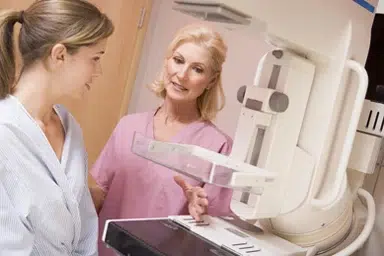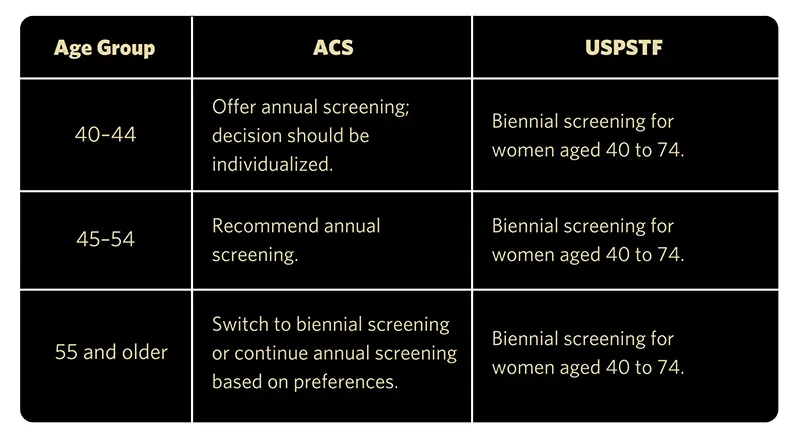Mammograms play a key role in the early detection of breast cancer and can save lives. However, breast cancer screening comes with drawbacks like, generating false positives and irrelevant biopsies. Another debated question is regarding when women should start getting a mammogram and how often they should get screened. Two expert groups – the American Cancer Society (ACS) and the U.S. Preventive Services Task Force (USPSTF) – differ in their opinion on this matter. Let’s see what the new guidelines released by these experts have to say.
USPSTF & ACS New Guidelines
According to the U.S. Preventive Services Task Force (USPSTF) guidelines updated April 2024:
- Women aged 40 to 74 should have mammograms every other year.
- USPSTF finds the lack of any supporting evidence to assess the balance of benefits and harms of screening mammography in women aged 75 years or older.
uspreventiveservicestaskforce.org
These recommendations differ from those of the American Cancer Society (ACS), which updated its guidelines in 2015:
- Women aged 40 to 44 should have the option to start annual mammograms if they choose to do so.
- Women aged 45 to 54 are advised to undergo mammograms every year.
- Women 55 and older should switch to biennial screening or continue annual screening, depending on their preferences and overall health.
The ACS emphasizes that women should have the opportunity to begin annual screening between the ages of 40 and 44, considering their individual risk factors and preferences.
Key Takeaways
The new screening guidelines of the USPSTF stress that personal preferences and individual health history are important factors to consider. Women should be aware about the benefits and drawbacks of screening, and weigh the benefits to the harms of screening to make the decision as to whether to have a mammography or not.
According to the USPSTF, biennial screening for women aged 40 to 74 offers a favorable balance of benefits and risks. However, yearly mammograms may lead to false positives, especially in younger women with dense breast tissue, potentially resulting in additional imaging or biopsies. These follow-up procedures often confirm the absence of cancer but can cause unnecessary anxiety and stress.
In a review of the latest guidelines on mammography, Harvard Medical School recommends that women discuss the matter with their doctor to determine when and whether they should have their next mammogram. The decision can be based on factors such as personal breast cancer risk, mammography risks and benefits, personal preferences, and age.
Sources: American Cancer Society, U.S. Preventive Services Task Force.
Final Thoughts
The updated mammography guidelines from the USPSTF and ACS highlight the significance of personalized breast cancer screening strategies. While both organizations agree on the life-saving potential of mammograms, they differ regarding the recommended starting age and frequency of screenings.
These differences underscore the need for women to engage in regular discussions with their physicians, considering individual risk factors and preferences. By doing so, women can make well-informed decisions that balance the benefits and potential drawbacks of mammography, ensuring optimal breast health management.

